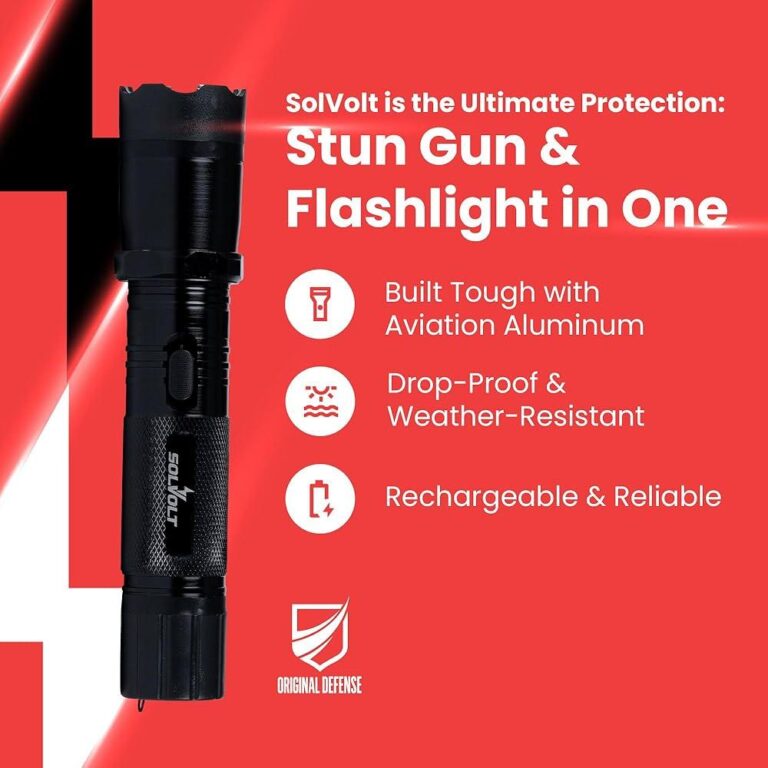Table of Contents
- Understanding the Risks of Water Exposure to Your Stun Gun
- Choosing the Right Protective Accessories for Water Resistance
- Effective Cleaning and Drying Techniques After Moisture Contact
- Storage Practices that Minimize Water Damage and Extend Device Life
- The Way Forward
Understanding the Risks of Water Exposure to Your Stun Gun
When it comes to stun guns, exposure to water can severely compromise their functionality and safety. These devices rely on precise electrical components that are highly vulnerable to moisture intrusion. Water can cause short circuits, corrosion on the internal circuitry, and degradation of the battery, rendering the stun gun unreliable or completely inoperative when you need it most. Moreover, a wet stun gun may pose additional hazards, such as unintended discharges or electrical shocks, further emphasizing the need for careful handling around liquids.
To keep your stun gun in optimal condition, it’s crucial to recognize the potential risks water presents and adopt preventive measures. Avoid using or storing your stun gun in damp environments, and always ensure it is completely dry before charging or use. If your device does get exposed to water, do not attempt to use it immediately-instead, allow it to air dry thoroughly and seek professional inspection if necessary. Incorporate habits such as:
- Keeping the stun gun in a waterproof case or pouch during outdoor activities
- Regularly inspecting seals and casing for any signs of wear or damage
- Wiping down the stun gun with a dry cloth after exposure to moisture
By proactively protecting your stun gun from water damage, you not only extend its lifespan but also ensure it remains a trustworthy tool for your personal safety.
Choosing the Right Protective Accessories for Water Resistance
When it comes to safeguarding your stun gun against water damage, investing in high-quality protective accessories is essential. Look for cases or covers specifically designed with water-resistant materials such as silicone or neoprene. These materials not only provide a snug fit but also create an effective barrier against moisture, sweat, and even unexpected rain showers. Additionally, consider accessories with reinforced edges and secure locking mechanisms to further enhance protection. Prioritize products labeled with official water-resistant ratings, such as IPX4 or higher, to ensure reliability in wet conditions.
Beyond just the material, the design plays a crucial role in water resistance. Opt for accessories featuring sealed zippers or flap covers that prevent water seepage at vulnerable points. Many protective cases also come with added features like moisture-wicking linings or desiccant packet compartments, helping to keep your device dry from the inside out. Always double-check that these accessories are compatible with your stun gun model to maintain ease of access and functionality without compromising on protection. Investing wisely in these protective options ensures your stun gun remains operational and safe, even in unpredictable environments.
Effective Cleaning and Drying Techniques After Moisture Contact
Immediately after your stun gun is exposed to moisture, it’s crucial to act quickly to prevent internal damage. Begin by powering off the device and removing any batteries, if possible, to eliminate the risk of short circuits. Use a soft, lint-free cloth to gently blot away visible water from the exterior. Avoid rubbing, as it may push moisture further into the device’s crevices. Next, employ silica gel packets or uncooked rice to absorb internal moisture by placing them in a sealed container along with your stun gun for at least 48 hours. This natural desiccation method helps draw out residual dampness without causing harm to sensitive components.
Additional tips to ensure thorough drying and cleanliness include:
- Use compressed air in short bursts to dislodge trapped water from hard-to-reach areas, ensuring to keep it at a safe distance to protect internal circuits.
- Clean contacts and surfaces with isopropyl alcohol (at least 70%) using a cotton swab, which accelerates drying and removes contaminants.
- After drying, reassemble carefully, ensuring everything is completely dry before reinserting batteries or turning the device back on.
Storage Practices that Minimize Water Damage and Extend Device Life
To effectively shield your stun gun from water damage, proper storage is essential. Avoid placing the device in damp or humid environments, such as bathrooms or near sinks, as moisture buildup can corrode internal components over time. Instead, store your stun gun in a cool, dry place with minimal exposure to temperature fluctuations. Utilizing a waterproof carrying case or a sealed container with silica gel packets can significantly reduce humidity levels and protect the device from potential water ingress.
Additionally, consider these smart storage habits to prolong your stun gun’s lifespan:
- Keep the stun gun off the ground to avoid spills or flooding risks.
- Regularly inspect the storage area for leaks or excess moisture.
- Ensure the device is fully dried before storing, especially after cleaning or accidental exposure.
- Avoid storing it alongside liquids or in bags that frequently get wet.
The Way Forward
Preventing water damage to your stun gun is essential for ensuring its reliability and longevity. By following these simple yet effective tips-such as proper storage, routine maintenance, and using protective cases-you can safeguard your device from moisture-related issues. Remember, a well-cared-for stun gun not only performs better but also provides you with peace of mind when you need it most. Stay proactive, and keep your stun gun ready for action at all times!Check Our Other Blogs
- StunGun – Your Trusted Source for Stun Guns, Laws, and Self-Defense Tips
- PepperSprayLaws – Your Trusted Resource for Pepper Spray Information
- StunGunLaws – Your Trusted Guide to Stun Gun Legality and Safety





